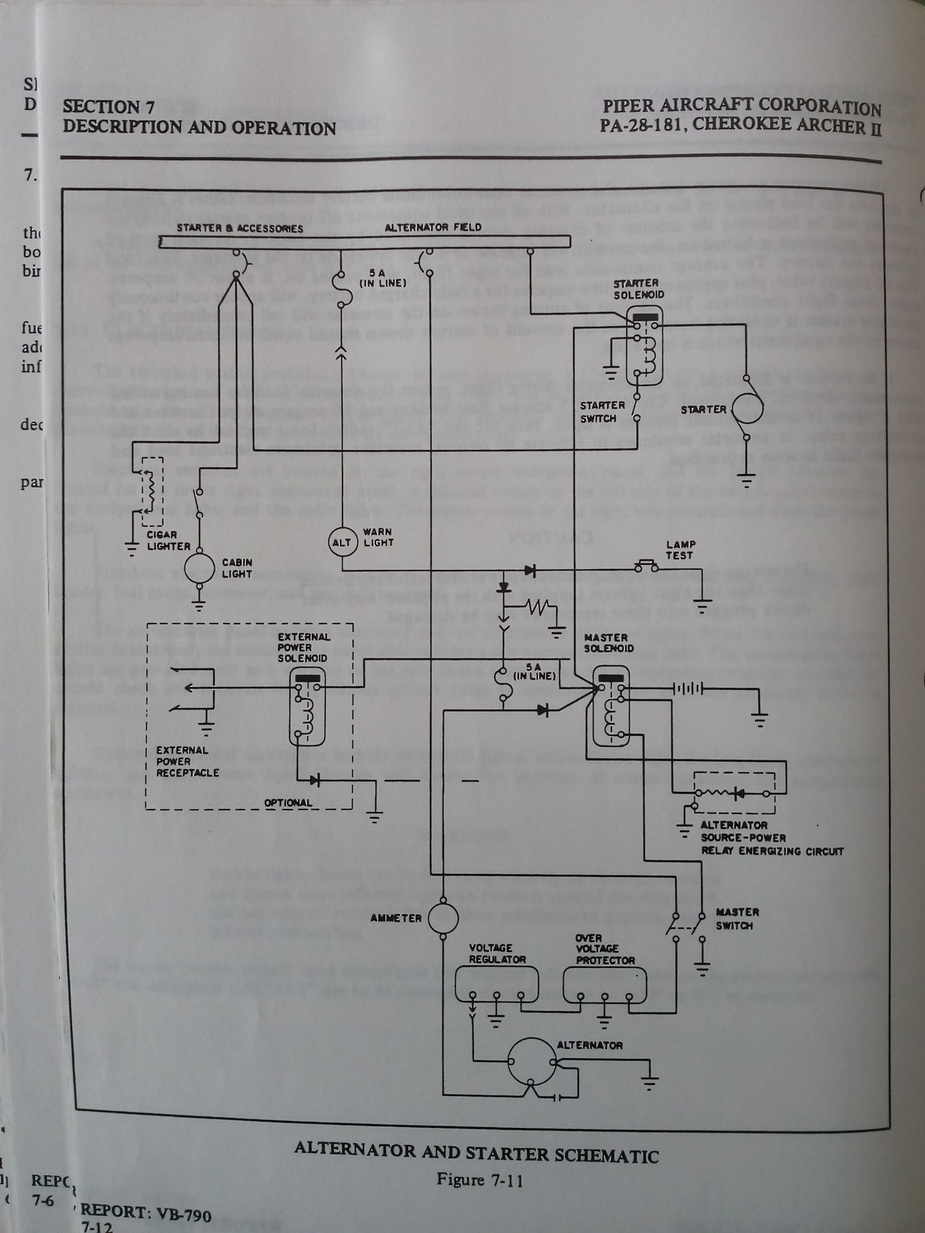The ALT warning light has recently illuminated on my PA28 -181. There are no issues with the alternator as far as I can tell, it is charging perfectly, the battery seems fine.
I must mention that I have the oldest Gill battery in the history of G.A…….. installed in 2007 ……..but it cranks faster than any plane around but this is possibly due to the replacement low resistance starter cables fitted and the SkyTec starter installed. Since the warning light illuminated, I have done 6 hours of flying (4 flights) and all is fine. I’ve checked battery voltage when cranking and my EDM engine monitor shows all is fine in flight too. Usual PA28 loads of strobes, transponder, 2 x Navcomms, Pitot Heat etc
If I push the “TEST” button, the “ALT” warning light gets just slightly brighter. I suspect that the resistor next to the two diodes on the circuit diagram below has started to “short” and has gone low resistance. This would make sense.
Has anybody got any real life experience in this? (BTW the two other interconnected warning lamps VAC and OIL are not illuminated – thank goodness)

Any help welcome.
Surely the 5A (in-line) fuse between the ammeter and the diode has gone, or the associated wiring is open circuit?
Alan
Editied to add: of course the $64k question is why did it go?
I struggle to understand that diagram. The bus at the top is labelled “starter and accessories” and “alternator field” at the same time.
Fairly obviously the alternator warning lamp is supposed to come on when the voltage difference between (a) the battery + terminal and (b) the alternator output, is high enough to illuminate it. That would normally be the case if the battery is relatively charged but the alternator is not generating anything – usually because its field is disconnected.
One thing which could illuminate the lamp continually is the lamp test switch becoming shorted. Or a short in the associated wiring, which could be really dangerous. I had a £12k avionics installation done a few years ago by a “top” 145 UK company where some control linkages were cutting into a cable harness, so this is very possible.
I had a similar issue with the Alternator warning light in our Piper Archer III.
The ALT INOP warning light was burning yet the Ammeter was showing that the Alternator was generating power and the LOW VOLTAGE light was off.
It turned out to be a blown fuse.
Peter wrote:
The bus at the top is labelled “starter and accessories” and “alternator field” at the same time.
These labels are for the circuit breakers below the bus. They forgot labeling buses in a single bus electrical system…
Peter wrote:
the alternator warning lamp is supposed to come on when the voltage difference between (a) the battery + terminal and (b) the alternator output, is high enough to illuminate it.
Yes. One side of the lamp is connected to the bus, and the other one to the alternator output via the ammeter.
But that side is also pulled down to ground through a resistor, so when the fuse (or ammeter) fails, so the lamp illuminates, but a bit weaker than if you use the test switch, which pulls it down to ground
We had same on PA28-161 on our club fleet this year and it was a u/s battery that kept causing it, new battery = problem went away
How could a low battery cause the light to come on, since the alternator output is the same voltage as the battery, during normal operation?
I think I would be looking at the diode pack in the alternator, I have a very clever little test box from snap-on that will tell me if this is the problem in seconds.
If the battery is remaining charged for multiple flights then a failed diode in the alternator isn’t the cause of the lamp illuminating. I’d go for the the blown fuse as suggested by buzz53.
I won’t argue with wigglyamp, he has guru status in all things electrical.